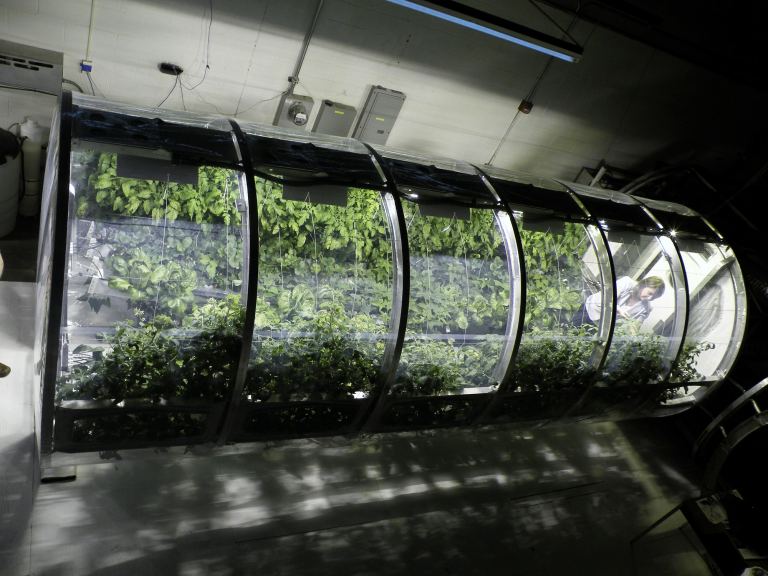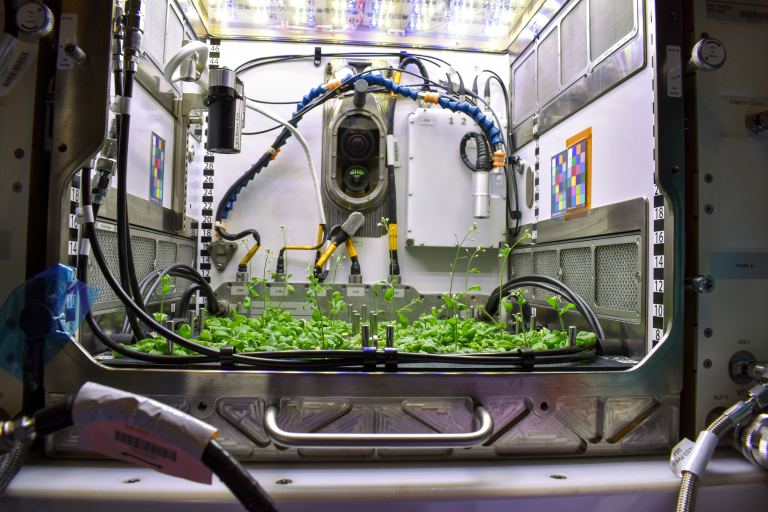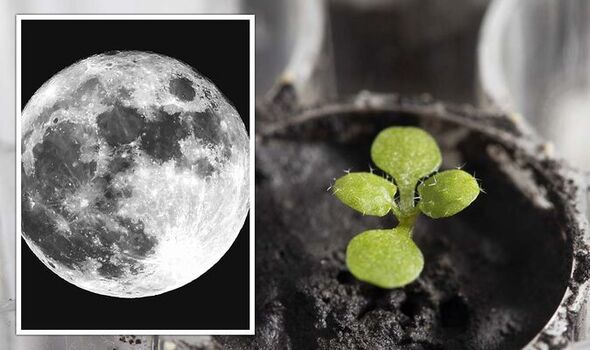Scientists successfully discovery Bacteria-Assisted that Growth Plants in Lunar Regolith
In the upcoming decade, NASA, China, and their global and commercial collaborators are poised to establish lunar habitats. NASA’s Artemis Program aims to deploy the Lunar Gateway and the Artemis Base Camp in orbit and on the lunar surface, respectively. Concurrently, China, in partnership with Roscosmos, plans to establish the International Lunar Research Station (ILRS), comprising both orbital and surface components. The establishment of this infrastructure lays the groundwork for a “sustained program of lunar exploration and development,” potentially paving the way for a permanent human presence on the Moon.
For sustained human presence beyond Earth, the ability to utilize local resources through in-situ resource utilization (ISRU) is paramount. This involves tapping into lunar water ice and regolith to cultivate plants, offering astronauts a self-sufficient source of food, as well as an additional supply of oxygen and biomass. To assess the feasibility of plant growth on the Moon, a Chinese research team conducted a series of experiments cultivating tobacco plants in simulated lunar soil with the assistance of bacteria.
The study, led by Yitong Xia and conducted by researchers from the Colleges of Agronomy and Biotechnology, Engineering, and Horticulture at the China Agricultural University (CAU) in Beijing, recently published its findings in Communications Biology, a journal affiliated with Nature. The research underscores the importance of growing plants in lunar soil to reduce reliance on Earth, considering the expense and time involved in resupply missions.

While the International Space Station (ISS) can be resupplied within hours, lunar missions take approximately three days to reach their destination. Yitong Xia, in a recent Reuters interview, emphasized the significance of establishing manned lunar bases for the Moon’s substantial scientific and economic potential. However, the challenge lies in providing sustainable resources such as food, oxygen, and water for the crew. Although transporting these essentials from Earth via rockets is an option, it is economically impractical. Xia proposes that a lunar greenhouse for plant cultivation could significantly reduce the reliance on Earth-moon transportation.
Various methods for growing plants on the Moon have been considered, including transporting horticultural soil, employing hydroponic systems, or using soil substitutes like hydrogels. However, these methods often entail substantial rocket carrying capacity, rendering them costly.
In their study, the research team utilized volcanic material from China’s Changbai mountains to create a lunar soil simulant with chemical and physical properties resembling lunar regolith. Two samples of this simulant were used to cultivate Nicotiana benthamiana, a relative of the tobacco plant. One sample was treated with three bacterial strains (Bacillus mucilaginosus, Bacillus megaterium, and Pseudomonas fluorescent), while the control group remained untreated.
The bacteria’s actions led to increased soil acidity, creating a low-pH environment that dissolved insoluble phosphate-containing minerals, releasing phosphorus for plant use. Results showed that the soil treated with these bacteria produced plants with longer stems and roots, along with heavier and wider leaf clusters compared to the untreated soil. This study builds upon similar research conducted by horticulturalists from the University of Florida last year.

In this investigation, the research team cultivated Arabidopsis thaliana (thale cress), a flowering plant from the mustard family, in twelve thimble-sized containers, each containing a gram of authentic lunar regolith collected during the Apollo missions. While the Arabidopsis seeds did germinate in the lunar soil, the growth outcomes were less robust compared to those in volcanic ash from Earth. This discrepancy suggested that lunar soil could benefit from enhancements in fertility, prompting the Chinese team to explore the incorporation of bacterial strains. Although various strains were assessed, none exhibited the same positive outcomes as the three strains ultimately chosen.
“The significance of these findings lies in the potential utilization of these microbes to transform lunar regolith into a bio-friendly substrate for plant cultivation in future lunar greenhouses,” Xia explained. “In contrast to other methods, our technique, a form of in-situ resource utilization, employs microbial enhancement on lunar soil, rendering it more fertile and conducive to plant growth. Our study achieved the same objective with considerably less use of carrying capacity compared to alternative plans.”
This article is republished from UniverseToday under a Creative Commons license. Read the original article.
Do not forget to share your opinion with us to provide you with the best posts !




0 Comments